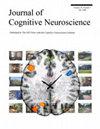健康受试者神经血管耦合与认知刺激的统计复杂性分析
IF 3.1
3区 医学
Q2 NEUROSCIENCES
引用次数: 0
摘要
神经血管耦合(NVC)是指脑血流变化与神经激活之间的紧密关系。通过经颅多普勒超声(TCD)测量脑激活的变化(脑血流速度[CBv]),并使用不同的认知任务和刺激对神经血管耦合进行无创评估。这项研究采用了一种新方法来分析 40 名健康人在完成 Addenbrooke's Cognitive Examination III 中的 20 项任务时发生的 CBv 变化。这种新方法比较了各种信息熵族(permutation、Tsallis 和 Rényi entropy)和基于不平衡性的统计复杂性测量。利用这种方法,我们发现与静息状态相比,Addenbrooke's Cognitive Examination III 中的大部分注意力、视觉空间和记忆任务都显示出较低的统计复杂度值。在熵-复杂度(HC)平面上,使用接收者操作特征曲线,通过曲线下面积来区分基线任务和认知任务。最佳曲线下面积值为 0.91 ± 0.04,p = .001,以区分静息状态和认知活动状态。我们的研究结果表明,通过 TCD 采集的脑血流动力学信号可用于区分静息状态(基线)和认知努力(刺激范式),使用熵和统计复杂性作为传统技术(如 CBv 信号的相干平均)的替代方法。进一步的工作应直接比较这些分析方法,以确定分析 TCD 测量的 NVC 变化的最佳方法。本文章由计算机程序翻译,如有差异,请以英文原文为准。
Statistical Complexity Analysis of Neurovascular Coupling with Cognitive Stimulation in Healthy Participants
Neurovascular coupling (NVC) is the tight relationship between changes in cerebral blood flow and neural activation. NVC can be evaluated non-invasively using transcranial Doppler ultrasound (TCD)-measured changes in brain activation (cerebral blood velocity [CBv]) using different cognitive tasks and stimuli. This study used a novel approach to analyzing CBv changes occurring in response to 20 tasks from the Addenbrooke's Cognitive Examination III in 40 healthy individuals. The novel approach compared various information entropy families (permutation, Tsallis, and Rényi entropy) and statistical complexity measures based on disequilibrium. Using this approach, we found the majority of the attention, visuospatial, and memory tasks from the Addenbrooke's Cognitive Examination III that showed lower statistical complexity values when compared with the resting state. On the entropy-complexity (HC) plane, a receiver operating characteristic curve was used to distinguish between baseline and cognitive tasks using the area under the curve. Best area under the curve values were 0.91 ± 0.04, p = .001, to distinguish between resting and cognitively active states. Our findings show that brain hemodynamic signals captured with TCD can be used to distinguish between resting state (baseline) and cognitive effort (stimulation paradigms) using entropy and statistical complexity as an alternative method to traditional techniques such as coherent averaging of CBv signals. Further work should directly compare these analysis methods to identify the optimal method for analyzing TCD-measured changes in NVC.
求助全文
通过发布文献求助,成功后即可免费获取论文全文。
去求助
来源期刊
CiteScore
5.30
自引率
3.10%
发文量
151
审稿时长
3-8 weeks
期刊介绍:
Journal of Cognitive Neuroscience investigates brain–behavior interaction and promotes lively interchange among the mind sciences.

 求助内容:
求助内容: 应助结果提醒方式:
应助结果提醒方式:


